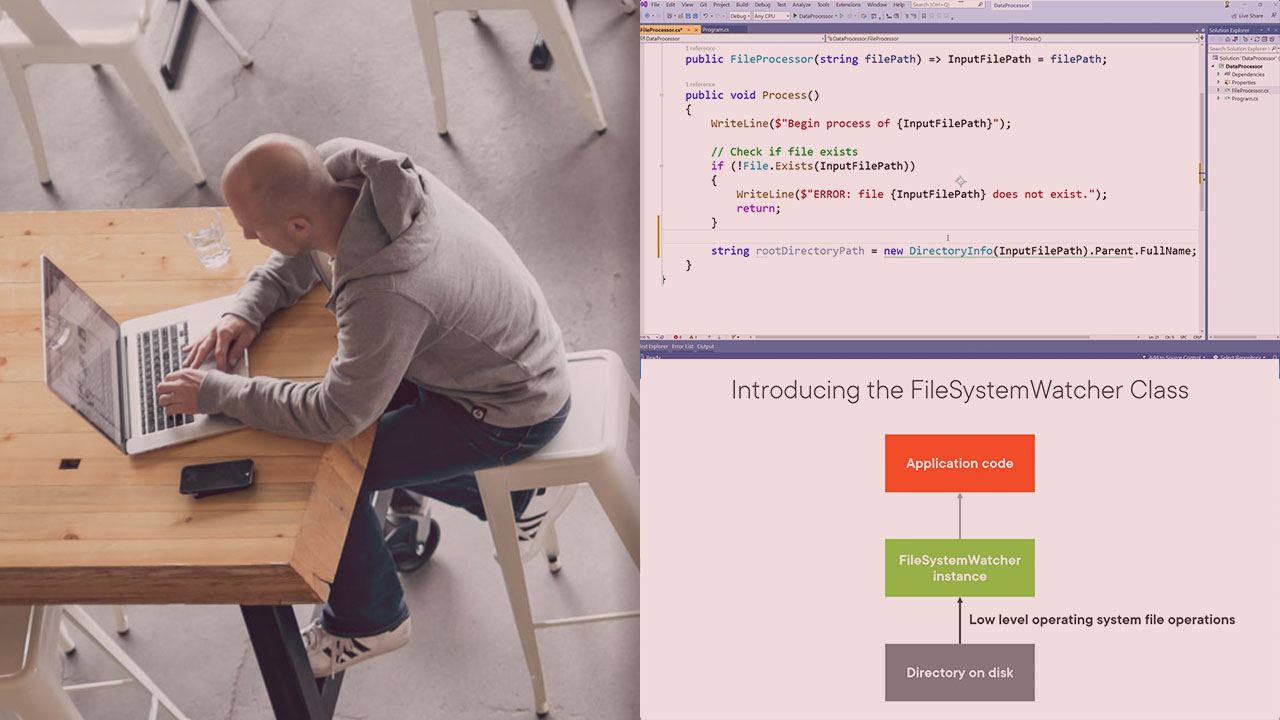- Course
Working with Files in C#
Reading and writing data to streams and files is central to many .NET applications, but it can be confusing. This course will teach you how to perform essential file operations and read and write text, binary, and CSV data to streams and files.

- Course
Working with Files in C#
Reading and writing data to streams and files is central to many .NET applications, but it can be confusing. This course will teach you how to perform essential file operations and read and write text, binary, and CSV data to streams and files.
Get started today
Access this course and other top-rated tech content with one of our business plans.
Try this course for free
Access this course and other top-rated tech content with one of our individual plans.
This course is included in the libraries shown below:
- Core Tech
What you'll learn
Reading and writing data is central to many .NET applications, but it can be difficult to know which approach to take. In this course, Working with Files in C# , you’ll gain the ability to read and write data and manage files. First, you’ll explore how to manage files and directories stored on disk. Next, you’ll discover how to monitor and respond to changes in the file system. Finally, you’ll learn how to read, process, and write data in text, binary, and CSV formats. When you’re finished with this course, you’ll have the skills and knowledge of C# files and streams needed to read, write, and process data in your C# applications.
Working with Files in C#
-
Introduction | 2m 23s
-
Creating a New Console App | 6m 33s
-
Checking if a File Exists | 4m 6s
-
Getting the Parent Directory of a Path | 2m 49s
-
Checking if a Directory Exists and Creating New Directories | 3m 43s
-
Copying a File | 3m 8s
-
Moving a File | 3m 32s
-
Getting the File Extension from a File Name | 2m 41s
-
Changing a Filename Extension | 3m 20s
-
Deleting a Directory | 2m 39s
-
Enumerating All the Files in a Directory | 4m 21s
-
Summary | 1m 49s

